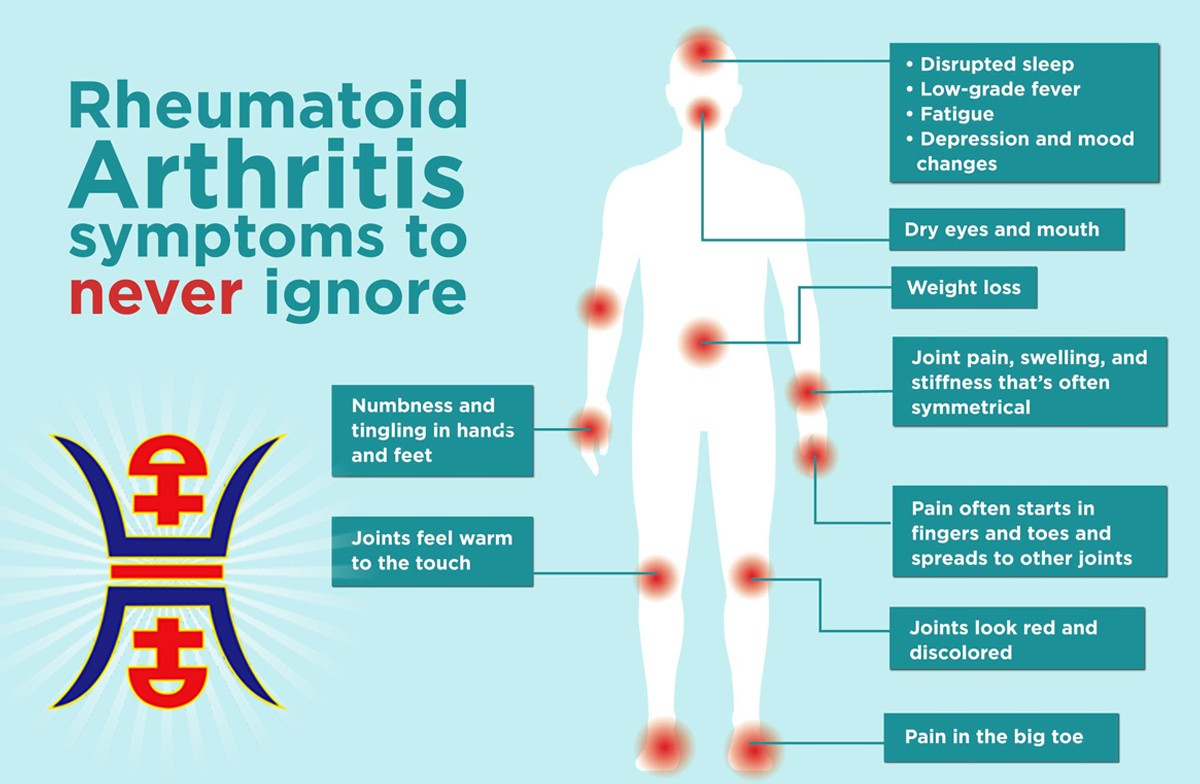Rheumatoid Arthritis
Overview
Rheumatoid arthritis is a chronic systemic autoimmune disease characterized by pathologic joint changes. It is clinically manifested as symmetric polyarthritis, mainly involving the joints of the hands, wrists, and feet. At the initial stage, there may be redness, swelling, a hot sensation, pain, and limited motion in the affected joints, while at the advanced stage, you may see rigidity and deformity of joints. In fact, the morbidity of rheumatoid arthritis is relatively high, the incidence being 1% overseas and 0.1%-0.3% in China, respectively, and most of the patients are young and middle-aged (80% of the cases aged from 20-45). Moreover, the prognosis of the disease is unfavorable, and 60%- 70% of the patients are said to become disabled, 10% of whom lose their ability to labor within only a few years.
In conventional medicine, the etiology and pathogenesis of rheumatoid arthritis have not been fully known. However, it is generally recognized as a kind of autoimmune disease with an abnormity of humoral and cellular immunity. There is no cure for rheumatoid arthritis. But clinical studies indicate that remission of symptoms is more likely when treatment begins early with medications known as disease-modifying antirheumatic drugs (DMARDs).
In natural health, the external cause is the invasion of the muscles, joints, and jingluo by exogenous pathologic factors such as wind, cold, dampness, and heat, while the endogenous factors are considered to be deficiency of water and fire energy. In terms of pathogenesis, it is the blockage of jingluo by pathogenic factors and energy stasis and blood blockage; phlegm toxin could occur in a prolonged case.
In natural health, clinically, there are five types of Rheumatoid Arthritis: wind, cold, and dampness; wind, dampness, and heat; a concurrence of cold and heat; phlegm stagnation and blood stasis; deficiency of water and fire energy with retained pathogenic factors. As far as the treatment is concerned, it should primarily aim at eliminating pathogenic factors and activating jingluo: dispelling wind, eliminating cold, removing dampness, clearing away heat, resolving phlegm, and removing blood blockage, should be used according to different cases; for prolonged cases with energy deficiency; herbs should be used for replenishing water and fire energy, nourishing energy of the liver and kidney system accordingly.
Essentials for Diagnosis
- Pain, swelling rigidity which is aggravated in the morning and alleviated by exertion: The affected parts are usually the small joints of the hands (especially the interphalangeal joints and metacarpophalangeal joints), wrist joints and foot joints; sometimes, elbows, shoulders, ankles, knees and hips may also be affected.
- At the advanced stage, rigidity and deformity of joints can be seen. The affected joints are less flexible and the muscles around the joints are atrophic. In some cases, there may be subcutaneous nodules in the prominence of joints.
- Laboratory examination: blood sedimentation in- creased; serum albumin decreased, and globulin increased; IgG, IgA and IgM increased in electropherogram; in most cases, blood RF positive.
- X-ray examination: swelling of periarticular tis- sue at the initial stage, followed by osteoporosis of joints and narrowing of joint space; at the advanced stages dislocation of joints, the disappearance of articular cartilage, erosion of subchondral bone substance and ultimately rigidity of joints.
Syndrome Differentiation & Treatment
- Wind, Cold and Dampness
- Chief Manifestations: Wandering pain of joints with localized swelling and numbness, or with localized cold pain which is aggravated by cold on cloudy and rainy days and alleviated by warmth; stiff joints in the morning, limited flexibility, aversion to wind and cold, pale tongue with thin and white, or white and greasy coating.
- Therapeutic Methods: To dispel wind, eliminate cold, remove dampness and activate collaterals.
- Wind, Dampness and Heat
- Chief Manifestations: Red, feverish, swollen and painful joints which are aggravated by touching, rigidity, or subcutaneous nodules, feverish body with flushed face, excessive thirst, sore throat, scanty deep yellow urine, red tongue with thin and yellow or yellow and greasy coating.
- Therapeutic Methods: To clear away heat, activate collaterals, dispel wind and remove dampness.
- Cold and Heat
- Chief Manifestations: Redness, swelling and pain of joints, general fever but preference to warmth, rigidity of joints, thirst with desire for a hot drink, red tongue with white coating or pale tongue with yellow coating.
- Therapeutic Methods: To warm the meridians,' eliminate cold, clear away heat and remove dampness.
- Phlegm Stagnation and Blood Stasis
- Chief Manifestations: Long-term intermittent ar- thralgia with swelling, rigidity and deformity of joints, numbness of limbs, darkish purple skin, purplish dim tongue with ecchymosis, white or greasy coating.
- Therapeutic Methods: To resolve phlegm, remove blood stasis, expel wind and activate jingluo.
- Deficiency of water and fire energy with retained pathogenic factors.
- Chief Manifestations: Prolonged arthralgia with intermittent pain of joints, lassitude, lusterless complex- ion, cold pain of lumber vertebrae, inflexibility of the joints, weakness of the knees, atrophy of muscles, pale tongue with white coating.
- Therapeutic Methods: To replenish water and fire energy of the body and remove the obstruction from the collaterals.
Foods & vegetables which are good for RA
- Berries: Berries such as strawberries, blueberries, raspberries, and blackberries are rich in antioxidants, which can help reduce inflammation and oxidative stress in the body.
- Citrus fruits: Citrus fruits such as oranges, lemons, limes, and grapefruits are rich in vitamin C, which is important for maintaining healthy joints and reducing inflammation.
- Leafy greens: Leafy greens such as spinach, kale, and collard greens are rich in nutrients such as vitamin K, calcium, and magnesium, which can help maintain healthy bones and joints.
- Cruciferous vegetables: Cruciferous vegetables such as broccoli, cauliflower, and Brussels sprouts are rich in sulfur-containing compounds that have anti-inflammatory properties.
- Sweet potatoes: Sweet potatoes are rich in beta-carotene, which can help reduce inflammation in the body. They are also a good source of vitamin C, potassium, and fiber.
- Pineapple: Pineapple contains bromelain, an enzyme that has anti-inflammatory properties and can help reduce pain and swelling in people with RA.
- Cherries: Cherries are rich in anthocyanins, which are compounds that have anti-inflammatory properties and can help reduce pain and stiffness in people with RA.
In Person With Heshoutang Members
With Heshoutang Online Members
Fill Out the Questionnaire by yourself
When you subscribe to the blog, we will send you an e-mail when there are new updates on the site so you wouldn't miss them.














Comments